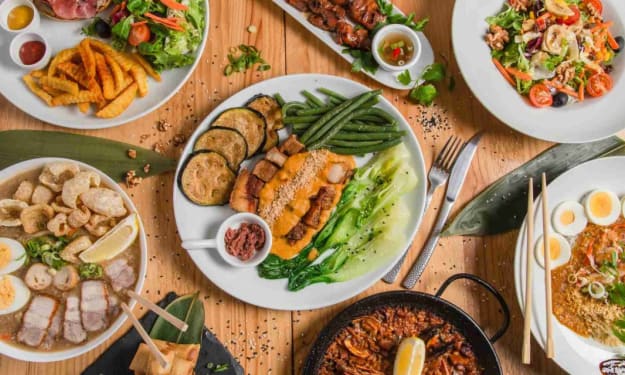The Fascinating World of Food: 10 Surprising Facts
"Unlocking the Mysteries of the Food We Eat:

The first time I said "I love you," I'm pretty sure I said it to some sort of food item but as much as I and well most of us love food here's the question how well do we really know it?
Food is an essential part of our daily lives. We rely on it to provide us with the energy and nutrients we need to survive. But how much do we know about the food we consume? While we may know that lemons are sour and chilies are spicy, there is so much more to discover about the food we eat every day. In this article, we will explore ten fascinating food facts that will change the way you look at your favorite dishes.
1. Killer Nuts
Cashews are a popular snack that is packed with protein and necessary vitamins. However, what most people don't know is that raw cashews are toxic. They contain toxins like urushiol and anacardic acid which can cause serious discomfort and sometimes fatal reactions. In order to remove the poisons from the cashews, they need to be thoroughly cooked and roasted outdoors.
2. Peppered with Flavor
Peppers come in a variety of colors, and each color indicates how ripe the pepper is. Green peppers are not yet ripe, yellow peppers are almost ripe, and red peppers are fully ripe and the sweetest of the three. Many people avoid green peppers due to their taste, but the green color actually indicates that the vegetable is not yet ready.
3. Very Deceptive Strawberries
Despite their name, strawberries are not berries at all. They are a relative of apples, apricots, and pears and are part of the rose family. What's even more interesting is that, unlike most fruits, the seeds of strawberries are found on the outside of the skin.
4. Sweet Exchange
Chocolate is an indulgent treat that we all love, but did you know that cocoa beans were once used as currency? The Aztecs and Mayans used cocoa beans as a form of currency, and it was a valuable commodity in ancient European empires like Rome. Today, chocolate is often used as a gift to win over the hearts of loved ones.
5. What Savvy
Wasabi is a popular Japanese spice that is known for its sharp, hot taste. However, the wasabi that we know in the West is often not real wasabi. Real wasabi is made from a type of horseradish that is processed into its paste form and prepared with its signature spicy steam. It is much more expensive than the common wasabi paste served in many sushi restaurants.

6. The Smell of Success
Asparagus is a nutritious vegetable that is often avoided due to its unpleasant odor. However, the smell that asparagus produces is due to the presence of a sulfur compound called mercaptan. While it may lead to some unpleasant bathroom experiences, asparagus is a great source of vitamin K, folate, and fiber.
7. The Power of Garlic
Garlic is a staple ingredient in many cuisines around the world. It is known for its strong flavor and pungent smell, but it also has some powerful health benefits. Garlic can help lower blood pressure, reduce the risk of heart disease, and even boost the immune system.
8. The Truth About Cinnamon
Cinnamon is a popular spice that is often used in baking and cooking. However, not all cinnamon is created equal. There are two main types of cinnamon: Ceylon cinnamon and cassia cinnamon. Ceylon cinnamon is considered to be the true cinnamon and has a sweeter, more delicate flavor. Cassia cinnamon, on the other hand, is more commonly used and has a stronger, more pungent flavor.
9. The Mystery of the Egg
Eggs are a staple ingredient in many dishes, but have you ever wondered why some eggs are brown and others are white? The color of an eggshell is determined by the breed of the chicken that lays it. Generally, brown chicken breeds lay brown eggs, while white chicken breeds lay white eggs.
10. The Secret Life of Mushrooms
Mushrooms are a versatile ingredient that can be used in a variety of dishes. However, they are also fascinating organisms. Mushrooms are not plants, but rather a type of fungi. They grow from spores and can be found in a variety of environments, from forests to your local grocery store.
From the toxic properties of raw cashews to the truth about cinnamon, there is always something new to learn about the food we eat. So, the next time you sit down to enjoy a meal, take a moment to consider the fascinating world of food.
About the Creator
Abdul Hannan Saif
Blogger | Writer | Explorer | wish to inspire, inform and help others to see fascinating discoveries and live a fulfilled life!






Comments
There are no comments for this story
Be the first to respond and start the conversation.